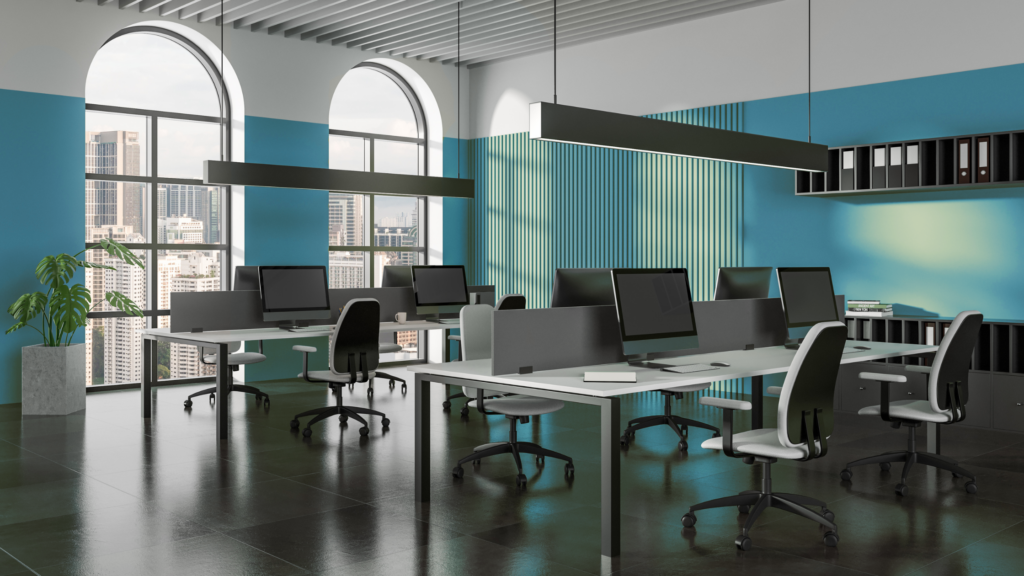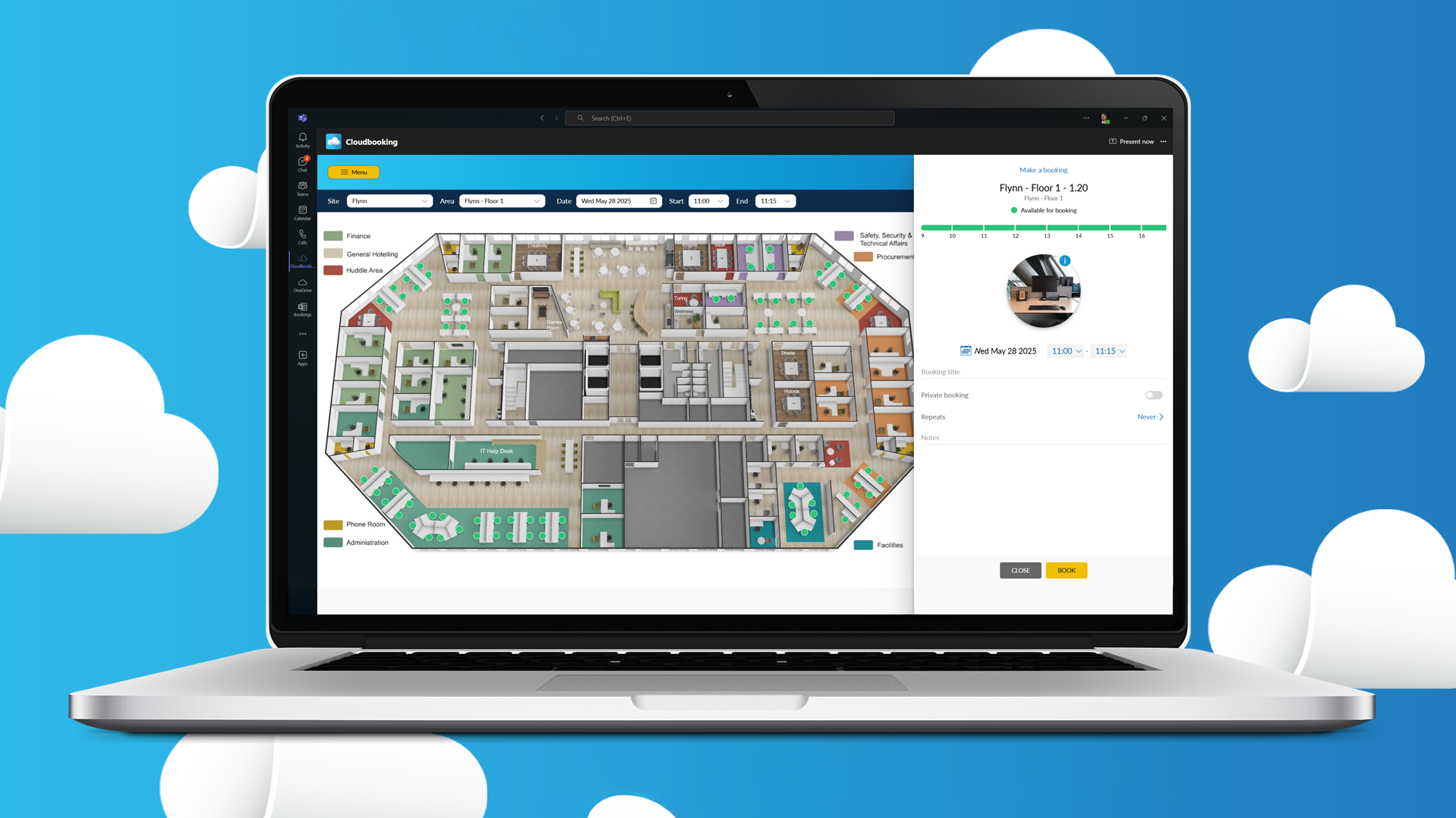
So, you’ve decided you want to implement a desk booking system. Good call! But before you get carried away dreaming of an office where everything just magically works, let’s talk about how to actually implement a desk booking system correctly. A solid plan and a little guidance (from the experts) at this stage will stop your system from turning into a logistical nightmare that leaves your employees confused and your IT team questioning their career choices.
Whether you’re after a dream-state hybrid work set-up or looking to manage workplace utilisation, we’ve got your covered. So, without further ado, let’s quit the yap and get into it already…
Set Your Goals: What’s the Endgame?
First things first, what are you actually trying to achieve? If your answer is something like “to make desk booking easier,” that’s a bit vague. Are you looking to cut down on empty desks? Support a hybrid work model? Reduce workplace arguments over who gets the good window seats?
Knowing your “why” will help you build a system that works rather than one that just sounds good on paper.
Consider these common goals:
- Maximise Office Space: Are too many desks sitting empty while others are constantly fought over?
- Support Hybrid Working: Do you need a system that supports flexible working and accommodates employees coming in on different days?
- Encourage Collaboration: Should teams have designated zones to work more effectively together?
- Reduce Costs: Are you looking to optimise real estate expenses by using space more efficiently?
Once you define your goals, you’ll have a clearer idea of what kind of desk booking system will best fit your needs.
Related Reading: Cloudbooking Introduces New Workplace Solution Bundles for Micro and Small-Sized Businesses
Pick the Right Desk Booking Approach
Let’s be clear, not all desk booking methods work for every company. The key is finding the right mix for your workforce:
- Desk Hoteling: Staff reserve a desk in advance, giving them a predictable workspace without needing a permanent one.
- Hot Desking: First-come, first-served. Ideal for flexibility but requires clear etiquette to avoid chaos.
- Assigned Seating: Each person has a fixed desk. Great for stability, seat sharing and team collaboration, but less flexible for fluctuating office attendance.
Many organisations benefit from a combination of these setups, allowing different teams to work in ways that suit them best. Getting the balance right from the start can make a huge impact, just ask Experian, who slashed their real estate footprint by around 50% with the help of Cloudbooking’s desk booking tools.
Assemble the Right Team
A desk booking solution isn’t something you roll out solo (as much as you want to take all the credit), it takes a dedicated team to make it work. To ensure a smooth implementation, bring together key stakeholders who understand both the logistics and the needs of the employees:
- Head of Workplace/Real Estate: Oversees office space planning and ensures the system aligns with broader workplace strategies and workplace policy.
- IT Team: Manages software setup, integration with existing systems and understands if things are possible from a technical perspective.
- Office Administration: Expected to carry out daily tasks within the new system, so their input is vital.
- Team Leaders: Represent their departments, providing insights into specific team workspace needs that should be met with future tools.
- Planned Users: Having staff involved early, who will use the system, helps anticipate potential issues and improve adoption later on. Try to involve desk booking champions and sceptics for real constructive input.
By assembling the right people, you’ll set yourself up for a rollout that’s not only functional but also widely accepted by those who will use it daily.
Consider the Practicalities
Before you roll out your system, think through these essential questions:
- How do we ensure adoption? Is clear signage available and can we monitor usage effectively or utilise options such as mobile apps, RFID automatic check-in or kiosks?
- Should certain teams have priority access to certain areas or should seating be open to all?
- What happens if someone doesn’t show up? Will there be a time limit before an unclaimed desk is made available to others?
- What kind of support will employees need? Will you have a helpdesk or require professional assistance from your workspace management provider?
- If you add workspace restrictions and desk assignments, will there be enough capacity for hot desking?
Answering these types of questions in advance will prevent a lot of headaches later on, so it’s best to cover all potential challenges and situations.
Setting Up Your Desk Booking System
Whatever desk booking software you choose, you should be able to tailor the system to align with your workplace policy (Cloudbooking is very customisable, just saying…). This isn’t just about allowing employees to reserve a desk, it’s about setting the right rules and configurations to ensure efficiency, so you could say it would be considered smart to plan out how you want your system to work.
Key considerations include:
- Auto-cancellations – Freeing up desks if a booking isn’t checked into.
- Desk assignments – Determining if some roles or teams require fixed seating.
- Booking periods – Defining how far in advance or how frequently desks can be booked.
- Restrictions – Limiting desk bookings to certain teams or departments.
- Floorplans and permissions – Providing a clear layout and setting access rules for specific spaces.
Honestly, a well-configured system ensures a structured and fair approach at the end of the day, which will only go on to make adoption higher.
Related Reading: How to Optimise Your Workspace with These 8 Occupancy Metrics
Making Sure Your Workplace Works
Before you go full steam ahead with your desk booking system, let’s take a step back… How are you going to actually measure success? Because let’s be honest, if you don’t set clear targets, you’ll have no idea if it’s actually making a difference or just another bit of office tech gathering digital dust.
Here are some key things to keep an eye on:
- Workplace utilisation – Are desks being used efficiently or do you have a ghost town of unused spaces?
- Adoption rate – How many employees are actually using the system instead of winging it and sitting wherever they fancy?
- Booking trends – Which days are peak office days and when could you host a game of five-a-side in the empty workspace?
- Employee feedback – Is the system smooth sailing or is it causing mass confusion?
Regularly checking these metrics will help you fine-tune the system, making sure it’s creating a more efficient, flexible workplace, rather than just annoying everyone.
Choosing your Desk Booking Software
So, you’ve nailed down your needs, figured out your desk booking approach, and assembled your A-team. Now comes the big and final step, choosing the right software and let’s be honest, this is where things can either go beautifully right or horribly wrong. Even the most meticulously planned workplace will crumble into office-wide chaos if your software is a nightmare to use.
So if it’s not obvious already, your desk booking software needs to work in harmony with everything you’ve mapped out so far. But before you get click-happy on a random solution, ask yourself:
- Ease of Use – Can employees book a desk in seconds or will they need to consult an instruction manual the size of War and Peace?
- Scalability – Will the system grow with your business or will it need replacing the second your office layout changes?
- Integration – Does it play nicely with your existing tools like Outlook, Teams, or Google Workspace or is it the office tech equivalent of a toddler refusing to share?
- Support & Onboarding – Will you get actual help when you need it or will you be trapped in an endless loop of automated responses and “Have you tried turning it off and on again?”
So, if you’re serious about making desk booking a success, think about your approach before you decide to be sold a dream by whoever’s sales team, there’s more to workplace management than sexy looking workplace software.
Struggling to navigate the many different workplace policies and strategies of 2025? Chat with a Cloudbooking Consultant today and uncover smarter, simpler ways to manage your workspace. Let’s turn your workplace into the ultimate productivity hub!


